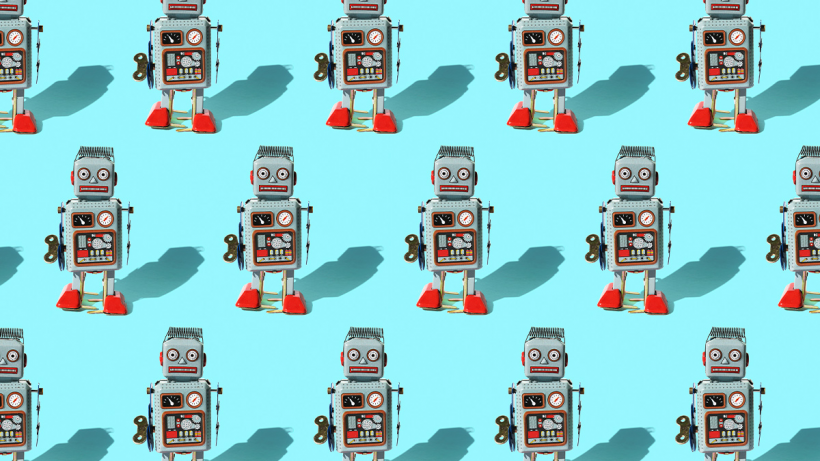Massachusetts Institute of Technology researchers have developed a swarm of tiny self-replicating robots that cooperate to construct larger buildings.
Artificial intelligence is used by small robots to help them construct buildings, cars, and even duplicates of themselves.
Voxels are the term for the primary parts of the robots.
The Center for Bits and Atoms at MIT developed the technology.
The team published an article describing the robots in the journal Nature Communications Engineering along with a video of the robots in operation.

85 million jobs may be displaced by the shift in labor between humans and machines by 2025, while 97 million new roles may emerge, as per World Economics.
Self-Replicating Robots May Replace Human Jobs
Neil Gershenfeld, an MIT professor and the director of the CBA, stated that when creating these frameworks, "intelligence" has to be incorporated.
He said there is only the structure; there are no wires.
CBA doctoral student Amira Abdel-Rahman said (per The Sun): "It could build a structure, or it could build another robot of the same size, or it could build a bigger robot."
The ability of the voxels to transfer power and data from one unit to the next makes them intriguing.
According to the researchers, two groups of bots can join one another and decide to develop a bigger version of themselves.
Scientists believe their robots might ultimately assist humans in producing items like automobiles and airplanes.
It's simple to see how this may eventually take the place of certain human professions, freeing up humans to work on other projects.
ALSO READ: OpenAI Trains Minecraft Bot to Play 70,000 Hours
Amazon's Robot
Meanwhile, a significant step in the e-commerce giant's efforts to lessen its reliance on the human order pickers who now play a vital part in delivering things from warehouse shelves to consumers' doorsteps is that Amazon.com Inc. has created a robot capable of detecting and handling specific items.
According to Fortune, Sparrow is the name of the robotic arm supported by many what appear to be retractable suction cup-like objects. In a business video made public on Thursday, the device independently removed objects from a plastic tote and put them in other containers. The bot can manage millions of distinct goods, according to Amazon.
Even though these tasks seem simple, automating them has long baffled Amazon roboticists. The company's facilities have long employed machinery to hoist pallets, organize shelves with tightly packed merchandise, and carry parcels on conveyor belts. However, Amazon also employs hundreds of thousands of humans, and because of their physical dexterity and intuition, they are now able to pick and pack things more quickly and precisely than existing machines.
If extensively used, robots like Sparrow might someday render sizable segments of that workforce redundant, shifting focus away from employees who perform simple jobs that require little training and toward a likely smaller cadre of professionals who monitor and maintain robotic systems. With 1.54 million employees worldwide, Amazon is the second-largest private employer in the US, after Walmart Inc.
The majority of Amazon's facilities are intended to be automated. However, the company is aware that people assume it would eliminate jobs. At a press conference at an Amazon robots research and manufacturing facility outside of Boston, executives talked about the new jobs that increasingly automated facilities will require. They said that several frontline employees would receive new training for these more highly specialized occupations.
RELATED ARTICLE: Robot Dog Roams Around in China to Share COVID-19 Safety Measures As Coronavirus Cases in Shanghai Rise
Check out more news and information on Technology in Science Times.












![Sat-Nav in Space: Best Route Between Two Worlds Calculated Using 'Knot Theory' [Study]](https://1721181113.rsc.cdn77.org/data/thumbs/full/53194/258/146/50/40/sat-nav-in-space-best-route-between-two-worlds-calculated-using-knot-theory-study.png)

